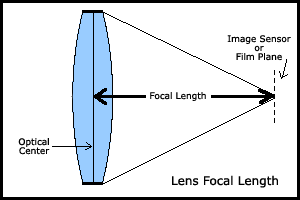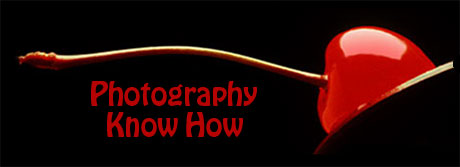Focal length is a term that refers to the optical length of a lens. It is the distance, measured in millimeters (mm), from the optical center of the lens to the image sensor or film plane.

Mathematical formulas are used that take into account the size of the sensor, or image area, and its distance from the center of the lens to determine the precise number of mm of each focal length.
The focal length of a normal lens is equal to the diagonal of the film or sensor. For this reason, you can have normal lenses with entirely different focal lengths. This is a somewhat simplified description, but for practical use it is adequate.
Lenses are generally referred to as normal, short or long. A normal lens sees the way the human eye sees. The image is reproduced without any reduction or enlargement and the field of view will be similar to the human eye.
When you use a normal lens, the distance relationships (or relative sizes) of objects appear normal…the way our eyes expect them to be.
With a shorter focal length lens, referred to as a wide angle lens, objects appear smaller than normal…or farther away. The image size is reduced, and a wider field of view is seen.
With a long focal length, known as a telephoto lens, objects appear larger or closer than normal. Both enlargement of the image and a narrower field of view are seen.
Digital Lenses Have 35mm Lens Equivalents
Because digital cameras are similar to 35mm cameras, and because most photographers are familar with 35mm lens designations, manufacturers use the 35mm standards when describing their lenses.
Thus, a normal lens for 35mm would be about 50mm (the true normal is actually 43.3mm but has traditionally been rounded off to 50mm), a wide angle might be 35mm or less and a telephoto 85mm or more.
With a digital camera, the focal length equivalents are often less, due to the fact that many image sensors are smaller than 35mm film. And image sensors come in different sizes, so that will affect the actual focal lengths of various digital lenses.
So a normal lens for a digital camera might be around 9mm to 11mm, a wide angle around 7mm or less and a telephoto around 20mm or more.
Because of these shorter focal lengths, digital camera lenses are physically smaller, which makes it possible to make very compact digital cameras.
Advantages of Wide Angle and Telephoto Lenses
Using a wide angle lens will give you a wider field of view than a normal lens without having to move farther away. And since objects will be smaller than normal, more can be included in your shot.
This can be helpful when you can’t move back far enough to get what you want. Group shots in a small room for example. Or shooting a scene close to a busy highway or on the edge of a river or cliff. Moving back in these situations could be rather difficult to say the least.
On the opposite scale, a telephoto has a narrow field of view and objects will be bigger, allowing you to get a larger image without moving closer to your subject. This is a wise choice when shooting wildlife or sports or in any situation where moving closer to the subject is either impossible or impractical.
Zoom Lenses
Digital cameras often come with zoom lenses and many also offer add on lenses that can give you a wider choice of focal lengths from which to choose.
The photography lessons on this site will give you the opportunity to see many of the advantages to having a range of focal lengths to choose from, and you will be able to evaluate how important having a wide angle or telephoto lens is to the kind of photography that most interests you.
TIP: When comparing zoom lenses, don’t be fooled by the “digital zoom” factor promoted by manufacturers and retailers. Most important is the amount of “optical zoom”.
The optical zoom actually changes the focal length of the lens, making it a true wide angle or telephoto lens. Digital zoom only magnifies the image pixels, similiar to making an enlargement from your negatives. Increasing the size of the image pixels can lead to the loss of quality and fine details in your photos.
Here’s to better photography …

Al Hannigan



0 comments